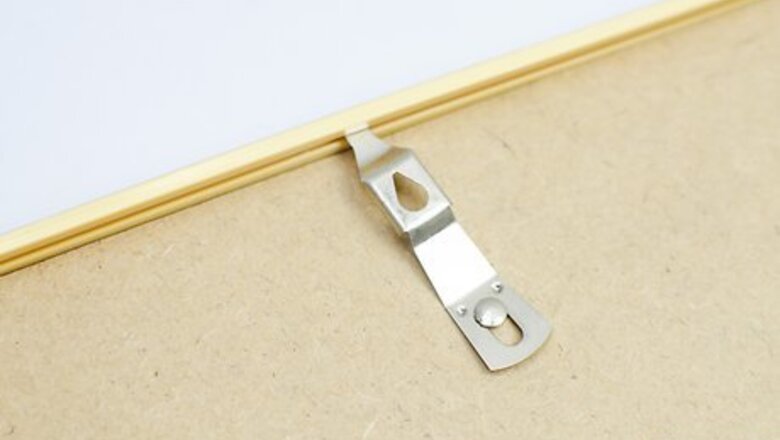
views
Choosing and Marking a Spot
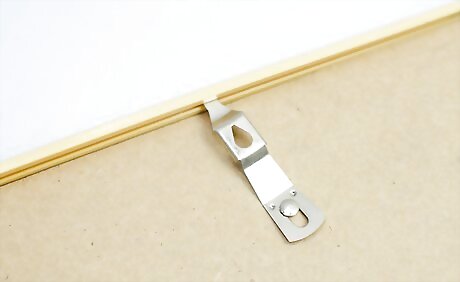
Attach hanging hardware to the back of your frame if you need to. Some picture frames come with hanging wires or crossbars already attached. If yours doesn’t, buy a picture hanging kit from the hardware store and attach a wire or a crossbar using 2 screws to the back of your frame. Crossbars are great for small, thin frames, while wire hangers give more support to heavy or wide frames. This hardware will make your picture more sturdy, and it will be much easier to hang this way.
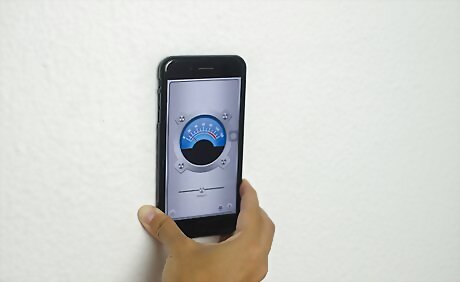
Find a stud if your picture is heavier than 15 pounds (6.8 kg). Use a stud finder to look for a stud in your wall, then mark it with a pencil. Heavy frames need the sturdiness of a stud, or they could potentially fall off wood, drywall, and plaster walls. You can also knock on the wall to find a stud. If you knock and it sounds hollow, there’s no stud there. If it sounds firm or dull, you’ve found a stud. If you can’t find a stud, drill an anchor into your wall before you hang up your picture. You can find wall anchors at most hardware stores.
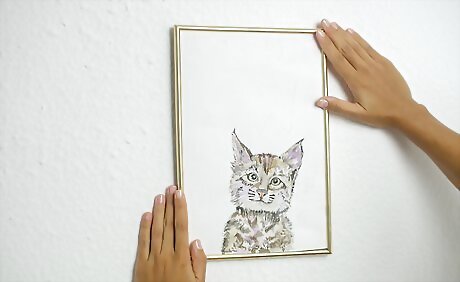
Hold the picture where you’d like to hang it on your wall. If you want your picture at eye level, put it about 57 inches (140 cm) up from the floor. If you’d like to make a gallery wall with multiple pictures, you can arrange them in a random pattern to cover your entire wall at whatever height you’d like.Tip: If you have a family member or a friend around, ask them to hold the picture up so you can take a step back to look at the placement. If you’re hanging multiple pictures on the wall, try arranging them in a collage so they are randomly spaced out. Take into account what’s around your picture, like furniture and light fixtures. Make sure that it isn’t being blocked by anything else in the room.
Mark the top center of the picture with a pencil. Lightly make a mark on the top edge of the picture in the very center. This will help keep your place on the wall when you take the picture away. If you’re worried about making a mark on your wall, use a piece of painter’s tape instead.
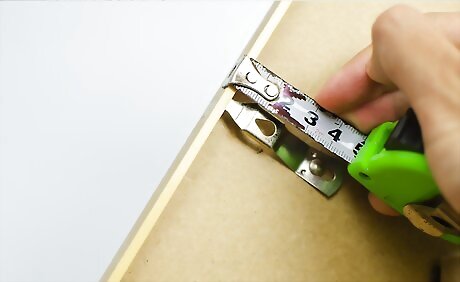
Measure from the top of the picture to the hanging hardware. Take your picture down from the wall and flip it over so that the back is facing upwards. Hook a measuring tape onto the hanging wire and pull it taut so the wire stretches up toward the top of the frame. Then, measure how far the wire is from the top of the frame by looking at your tape measure. This measurement will help your picture hang at exactly eye level instead of a little bit above it. If your picture has a crossbar instead of a hanging wire, measure the distance from the crossbar to the top of the picture.
Mark the wall with the measurement you just took. Take your tape measure and bring it back over the mark you made on your wall. Place your tape measure over the mark, then make a second mark at the measurement you just took that shows how far the wire is from the top of the frame.
Using Nails and Hooks
Pound a small nail into the wall for pictures lighter than 5 lb (2.3 kg). Super small pictures don’t need much to keep them in place on wood, drywall, and plaster walls. Take a nail and align it with your lower mark on the wall, then pound in the nail with a hammer at a 45-degree angle until it sticks out about 1/3 of the way. Keeping the nail at an angle will be much sturdier than one parallel to the ground. You can also find plated nails that have a small disk at the front to stop them from going too far into the wall.
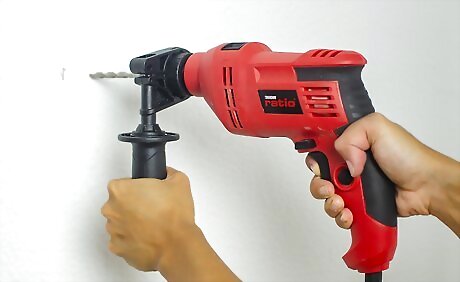
Drill a picture hook into the wall for pictures around 10 pounds (4.5 kg). Medium-sized pictures need a little more hardware than just a nail. Grab a picture hook and line the bottom of it up with the second mark you made on the wall. Then, use a screw to drive the hook into the wall through the hole at the top. Make sure the screw is pushed in as far as it can go so it’s secure. EXPERT TIP Peter Salerno Peter Salerno Installation Expert Peter Salerno is the owner of Hook it Up Installation, a professional installation company, which has been hanging art and other objects around Chicago, Illinois for over 10 years. Peter also has over 20 years of experience installing art and other mountable objects in residential, commercial, healthcare and hospitality contexts. Peter Salerno Peter Salerno Installation Expert Expert Warning: Make sure you have permission to drill if you aren't the property owner. Find out what the stipulations are for hanging pictures. Some buildings with concrete walls limit how far you can drill into the wall, and some won't allow you to drill into the concrete at all. Picture hooks can grab onto crossbars or hanging wire, so you don’t have to worry about what’s on the back of your picture. If you are drilling into concrete or brick, use a masonry bit on your drill and push an anchor into your wall before you add a screw.
Slide the picture onto the hardware in the wall. Hold the picture straight up and down and carefully put it onto the hardware in the wall, making sure that the wire or the crossbar on the frame catches. You can adjust the picture later, so don’t be worried if it isn’t completely even yet. Try not to catch any part of the frame on the hardware, or you could scratch it.
Adjust your picture if it’s not level. Place the level on top of the picture. If the bubble measure remains in the center of the level, then your picture is hung straight. If the bubble is off to one side, adjust the picture until the bubble is in the center of the level by tilting the frame back and forth. You can find levels at most hardware stores, or you can download one on your smartphone.
Hanging with Adhesive Strips
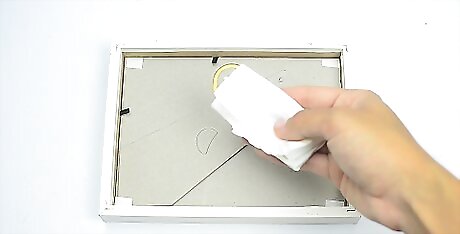
Clean the surface of your picture with rubbing alcohol. Dab a small amount of rubbing alcohol onto a cloth or paper towel. Wipe down the back of your picture frame to clean it off so the surface is smooth and dust-free. Wait for the alcohol to dry for about 5 minutes. A clean surface will adhere to your hanging tool much better.
Peel the backs off one side of the adhesive strips. The adhesive strips are double-sided, so you can work with one side at a time. Take the backing off of one side so that one part is sticky, but leave the backs on the other side. Working with one side at a time will give you more control over where your picture goes.
Push the sticky backs onto the back of the picture frame. Depending on how large your picture is, you may need 2 to 6 adhesive strips. Put an equal amount down each side of the picture so that it stays secure on your wall.Warning: Always attach the adhesive strips to the frame, not the center of your picture. Since the strips are sticky, they could tear or damage any paper or cardboard in the picture frame. Most adhesive strips can hold up about 15 pounds (6.8 kg). If your picture frame is much heavier than that, you may want to choose a different method for hanging.
Take the backs off the other side, then push them onto the wall. Now you can peel the backing off the second side of the adhesive strips. Hold your picture up to the wall and make sure it’s straight, then carefully push the entire thing onto the wall with steady, even pressure. You won’t be able to adjust the picture after you push it onto the wall, so make sure it’s perfectly aligned. To take your picture off the wall, pull the frame up and off the back of the adhesive strips. Then, pull the adhesive strips down and away from the wall to take them off.















Comments
0 comment